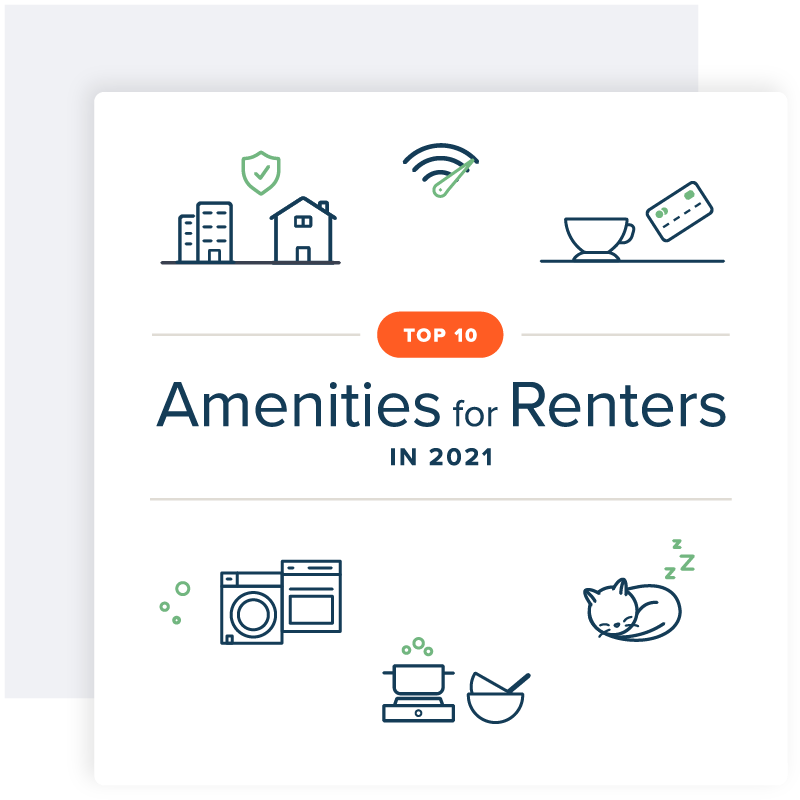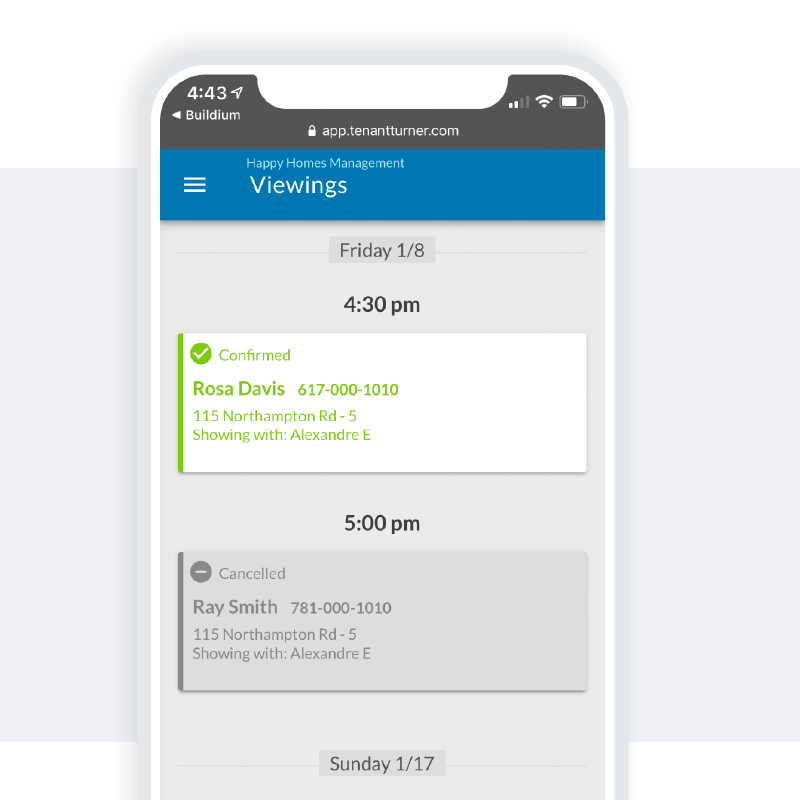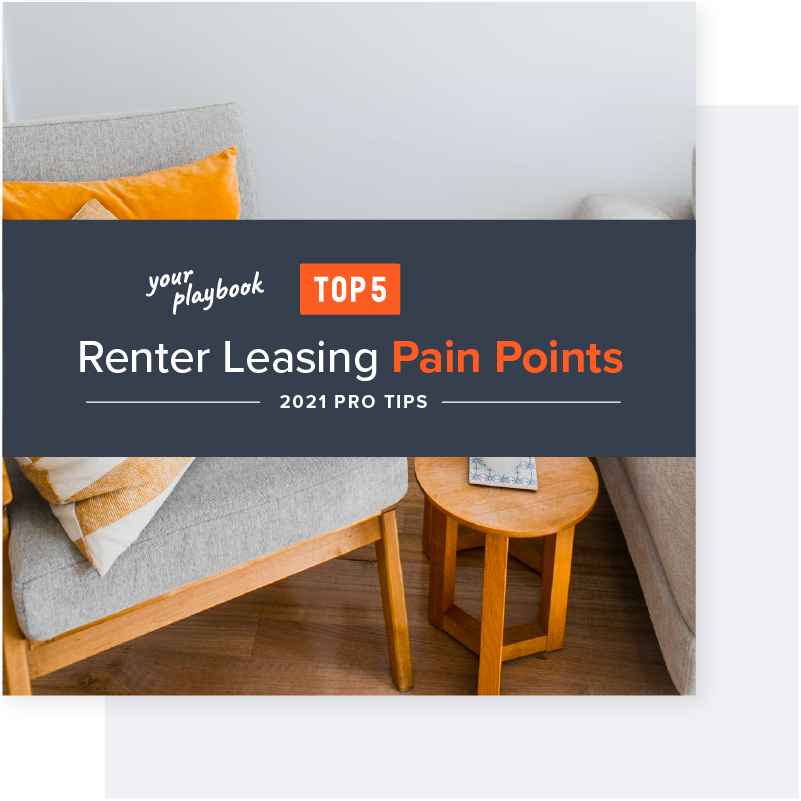
Over the last year, we’ve seen leasing season go through massive changes brought on by the pandemic—and our customers are always helping us find new ways to support their leasing season experience.
To help you stay on top of your game, we put together a Leasing Season Playbook to offer the expertise you need to make sure your processes are on point (and enabled by the latest technology).
There are seven main categories that make up the Leasing Season Playbook: Renewals, Marketing Listings, Showings, Screenings, Signing the Lease, Move-in, and Measurement & Follow-up.
Get a Pulse Check Early: Before you can offer a renewal or assume they’ll be a vacancy, you’ll have to check with the owner and then the resident regarding their plans. It’s best to start this process as early as 120 days before the lease is up.
![]() 6 Retention Tips to Get Renters to Renew Their Leases
6 Retention Tips to Get Renters to Renew Their Leases
Track Your Process: Being coordinated is critical to shoring up your lease renewals and retaining your residents. The good news is that you can use technology to stay organized with every communication and action you take —whether it leads to a renewal or a move-out.
![]() Product Tutorial: Buildium Lease Renewals
Product Tutorial: Buildium Lease Renewals


Know Your Renters: Writing the perfect rental listing starts with identifying your ideal renter. Don’t know what your residents want or how the pandemic has impacted their preferences? Check out this infographic.
Writing the Listing: Once you know who your target residents are, you can then begin focusing on attracting them. Based on looking at the most successful listings, we put together a guide that you can follow to write listings that shine.
Listing and Vacancy Syndication: Since you are sharing the same listings across multiple sites, why should you post the same information on each one? That’s why platforms like Buildium, can make distributing the information to multiple listing sites like Trulia, Zumper and Zillow easy with the click of a button. Don’t forget to make your listings as visually transparent as possible with videos and 3d camera technology like Matterport.
How to Post a Rental on Facebook Marketplace
Facebook Marketplace is a newer channel that property managers can leverage to get the word out about vacancies through their social networks. For more info, check out this video.
Your Company’s Digital Presence: Your own online marketing is key to promoting your listings. Make sure that your website provides an accurate representation of your company and that your social media accounts are active. Did you know that 1 in 2 millennial apartment hunters turn to property managers’ websites to find an apartment?
![]() The 14 Best Rental Listing Sites for Property Managers [Blog]
The 14 Best Rental Listing Sites for Property Managers [Blog]
Nurturing Leads:
Once you have potential residents interested, you have to act fast. Getting back in touch first could be the difference between signing a lease and losing out on quality, prospective residents.
Automating Your Showings Process: Even if your process isn’t fully virtual, you can rely on technology to make your showings process efficient. Partners like Showings Coordinator powered by Tenant Turner, make this a simple integration to your property management software and can handle pre-qualification, follow-ups, scheduling, confirmations and cancellations—you could reduce your no-shows by 75%!
![]() The Low-down on Self-showings: Do the Benefits Outweigh the Risks? [Blog]
The Low-down on Self-showings: Do the Benefits Outweigh the Risks? [Blog]


Doing some detective work on your residents should never be overlooked since an eviction can cost a property owner thousands—and also take up your time to handle it right. That’s precisely why a screening partner is essential. And TransUnion (one of the three credit bureaus) has created a Resident Score that can more accurately predict evictions by 15%.
![]() Tenant Credit Checks: What Property Managers Need to Know [Blog]
Tenant Credit Checks: What Property Managers Need to Know [Blog]
Signing the lease is often the entry point for your residents to the technology you use. So you should make sure that this process is smooth, clear, and introduces your resident site as the central destination for info, payments, and communication.
![]() How to Construct the Perfect Lease [Guide]
How to Construct the Perfect Lease [Guide]
Pro tip: Offering (or even requiring) renters’ insurance directly in your property management software can be a smart move for both your residents’ possessions and your owners’ properties.


Setting expectations during this stage is the recommended path—and your incoming residents will appreciate the clarity. Ahead of time, you’ll want to communicate how they’ll need to get set up with basics like their keys, utilities, internet, and any other amenities offered. Additionally, third-party software like HappyCo’s Happy Inspector can also help you hone and organize the move-in process, reducing tenant disputes by 50%.
Measuring Your Success: Congratulations on finding a great resident! Now, it’s up to your excellent customer service to make renters truly feel at home. This is also the perfect time to measure how efficient you are throughout the entire leasing cycle—from marketing your listings to filling vacancies overall.
![]() Maximizing Your Lead-to-Lease Conversion [Video]
Maximizing Your Lead-to-Lease Conversion [Video]
Resident Retention: The cost of finding a new renter is always high in an increasingly competitive rental market with move-out costs that can easily exceed $4,000 per instance (National Apartment Association). Continue to stay on top of what’s important to retaining renters and knock it out of the park with a personable approach that’s enhanced by technology.
![]() Leasing in 2021: Top 5 Renter Pain Points [Infographic]
Leasing in 2021: Top 5 Renter Pain Points [Infographic]
Leasing Season Playbook [Webinar] If you can’t get enough of this Leasing Season Playbook, stream our more in-depth video on demand.
